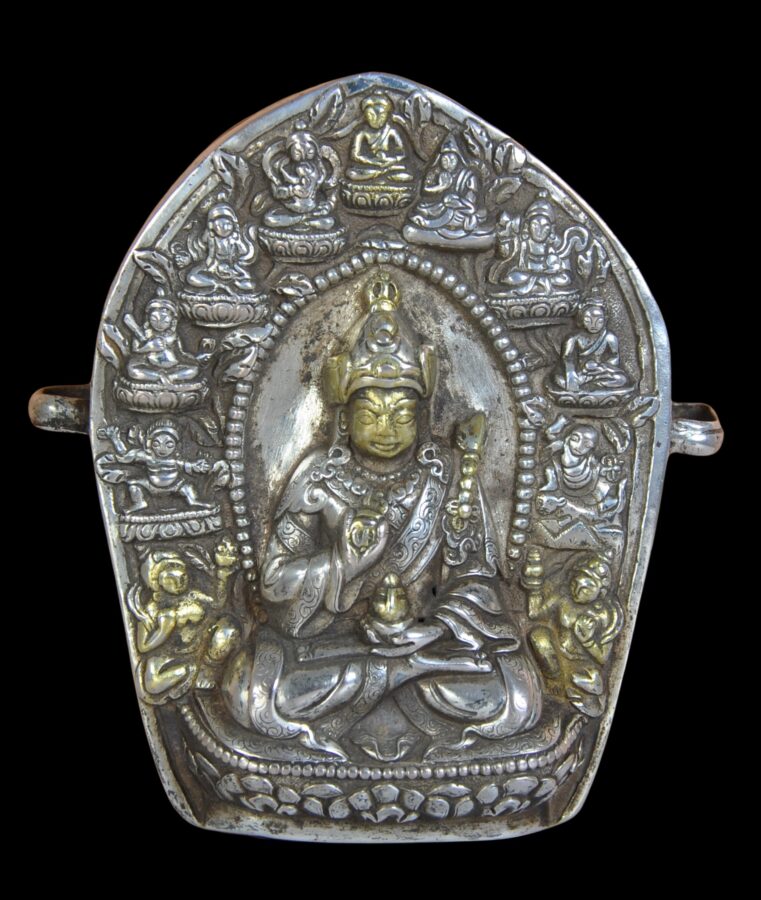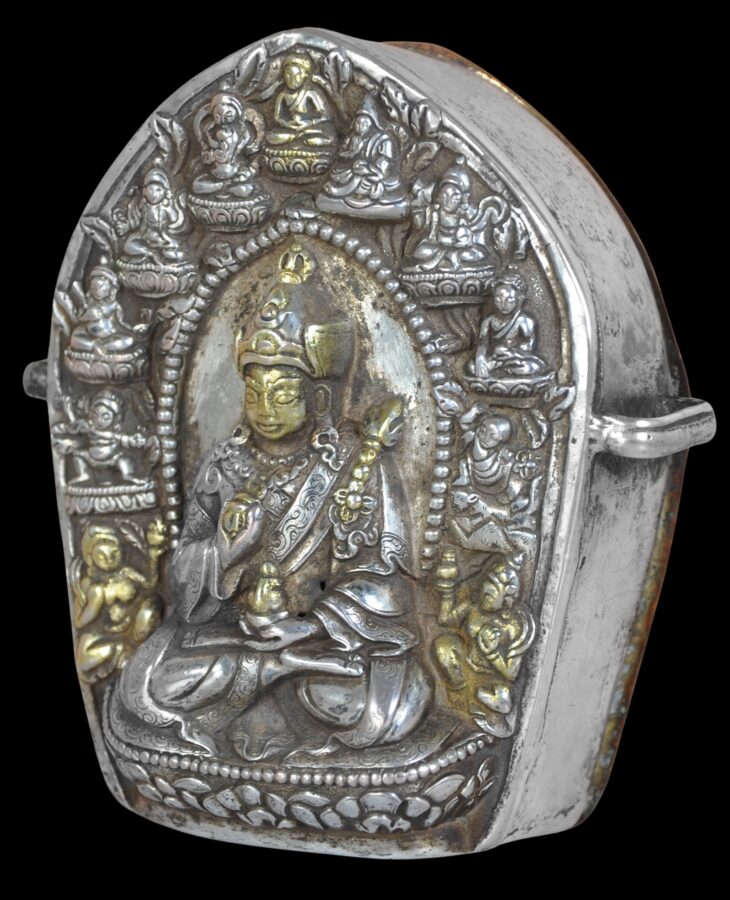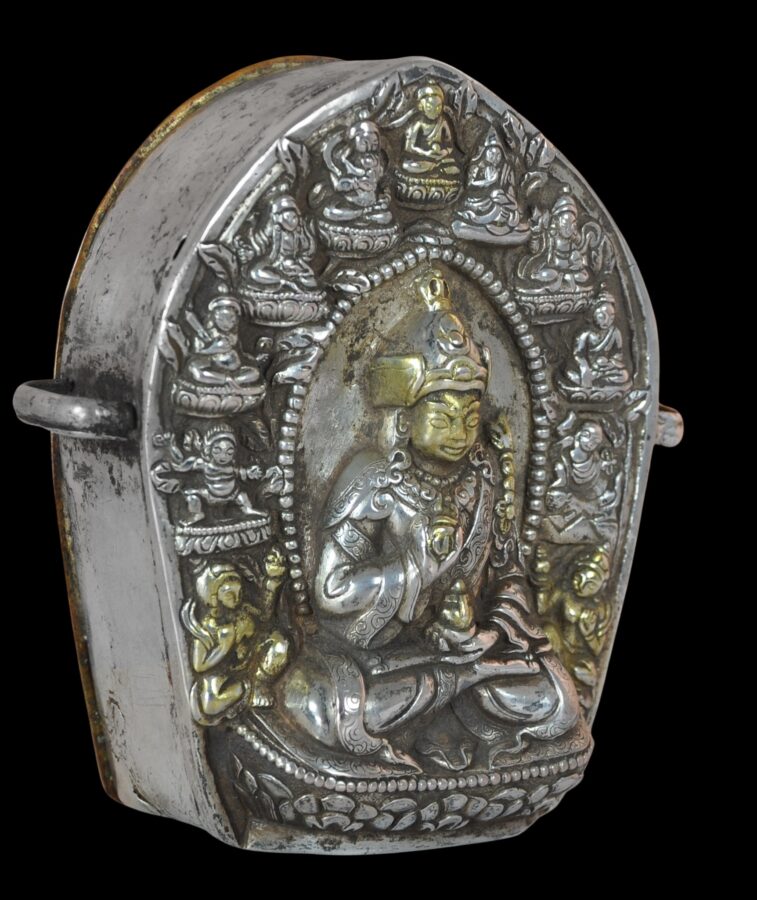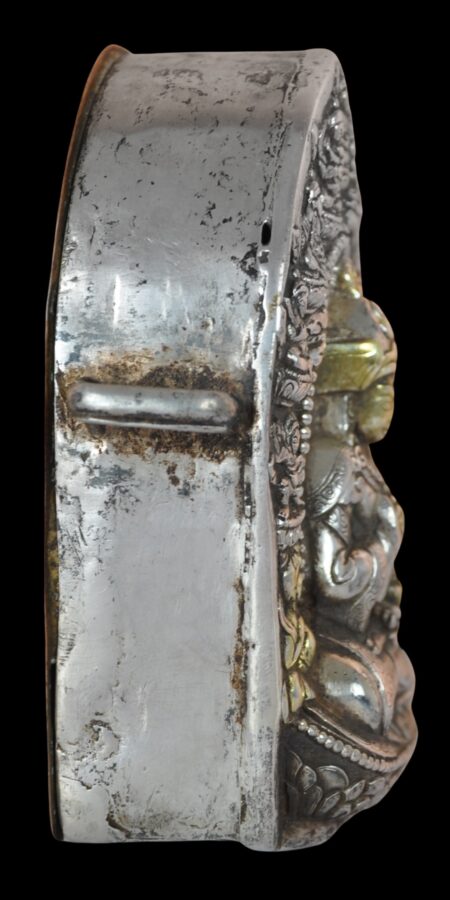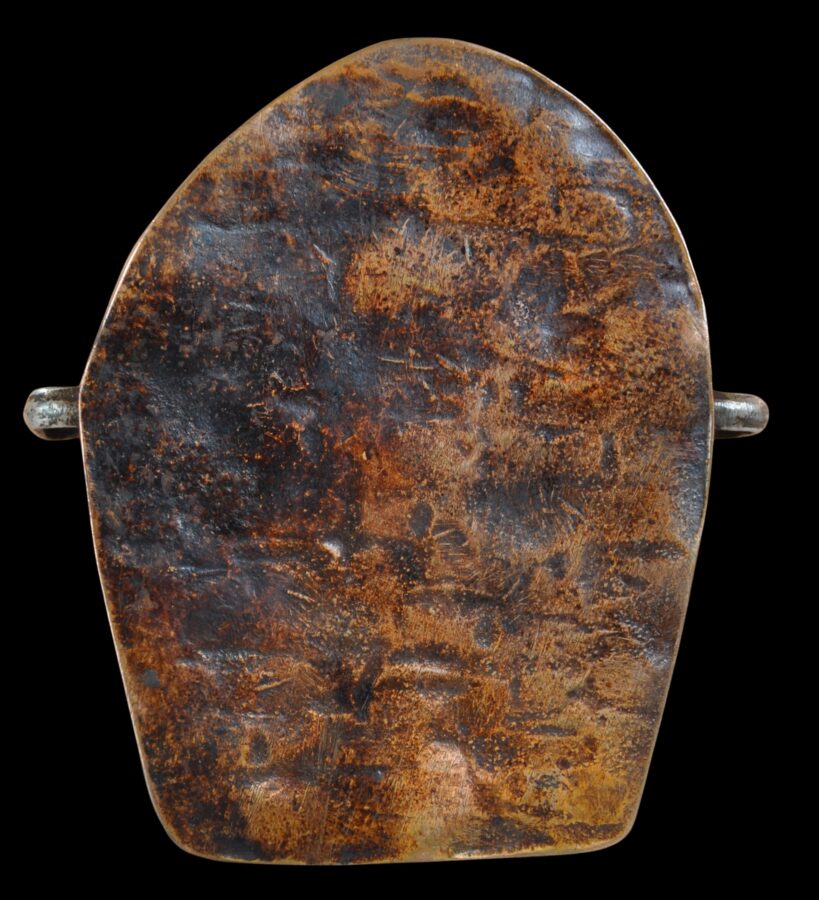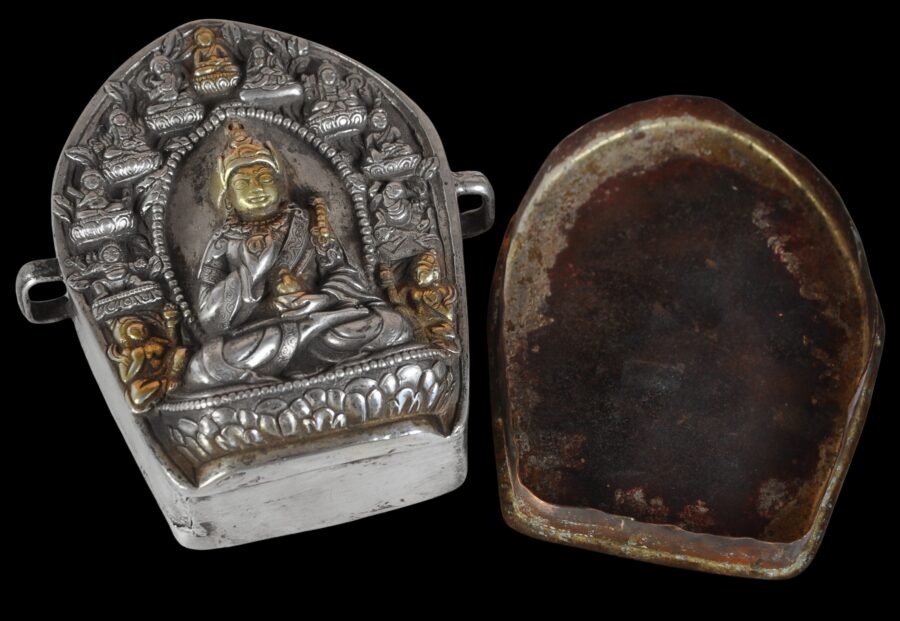Enquiry about object: 9201
Rare Sikkim Parcel-Gilt Silver Ga’u Box
Gangtok, Sikkim, Himalayan India 18th-19th century
height: 10.2cm, width: 9.5cm, depth: 4.3cm, weight: 303g
Provenance
private collection, UK
This unusual ga’u box of arched form comprises a parcel-gilt silver front and silver sides with rectangular silver side loops for suspension, and a hammered copper backing plate. It is from Sikkim, formerly a Himalayan kingdom, and now an Indian state.
The ga’u is decorated with particularly complex imagery. It is decorated with a large central figure of the Buddhist saint Padmasambhava in high relief, and surrounded by his eight manifestations, and surmounted by a gilded figure of Amitabha. His two wives are on either side.
Padmasambhava is represented seated on a lotus asana with his legs crossed. He holds a vajra in his right hand. A patra (or alms bowl) lies in his lap. And resting against his left arm is a lobed staff or khatvanga. Padmasambhava’s face, crown, vajra and patra also are gilded. Padmasambhava’s two wives also are gilded.
Padmasambhava is a popular figure in Sikkim and is said to have passed through the territory in the 8th century on his way to Tibet, blessing Sikkim and introducing it to Buddhism. Consequently, Padmasambhava is a popular deity in the arts of Sikkim.
Padmasambhava was a renowned tantric ascetic in 8th century northern India. He was born in the Swat Valley in what is northwestern Pakistan today. Tri-Sron Detsan, the then Tibetan ruler, invited Padmasambhava to come from India to Tibet where he remained for around fifty years establishing monasteries in the tantric tradition. He is said to have subdued all malignant gods in Tibet and if they agreed to follow Buddhism and become defenders of the doctrine, he promised to have them included in the Mahayana Buddhist pantheon. At the end of his time in Tibet, Padmasambhava mysteriously disappeared. Some legends have it that he left Tibet riding through the clouds on a winged horse.
Ga’u boxes were worn by men and women in Tibet and in other parts of the Buddhist Himalayas such as Sikkim as protective amulet cases. Usually, they were worn suspended from the neck. They would contain a variety of precious and protective items such as parchment inscribed with mantras, perhaps a small figure of a deity, and cloth from the robe of an esteemed monk.
Related boxes are illustrated in Ghose (2016, p. 55) and attributed to 18th century Bhutan. This is erroneous. No such boxes are known in Bhutan. Sikkim, in Himalayan India, is the correct designation. See also another related box at Bonhams, also erroneously attributed to Bhutan instead of Sikkim.
The ga’u here is small but heavy for its size, It has clear signs of age.
References
Ghose, M. (ed.), Vanishing Beauty: Asian Jewelry and Ritual Objects from the Barbara and David Kipper Collection, Art Institute of Chicago, 2016.
Lama, M.N., Ritual Objects & Deities: An Iconography on Buddhism & Hinduism, Lama Art, 2003.
Sakya, Jnan Bahadur, Short Description of Gods, Goddesses and Ritual Objects of Buddhism and Hinduism in Nepal, Handicraft Association of Nepal, 2000.


